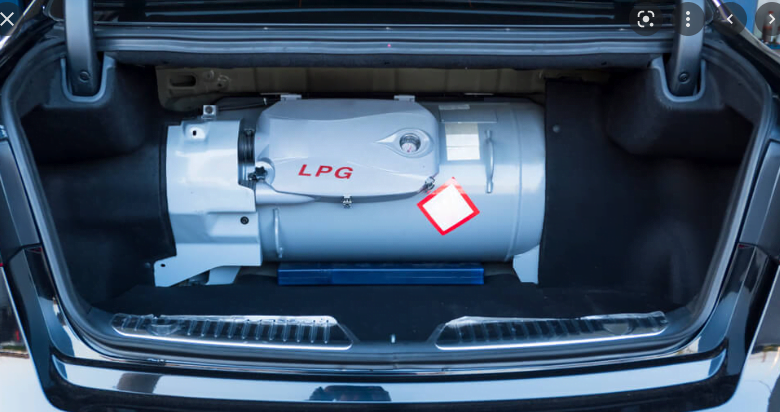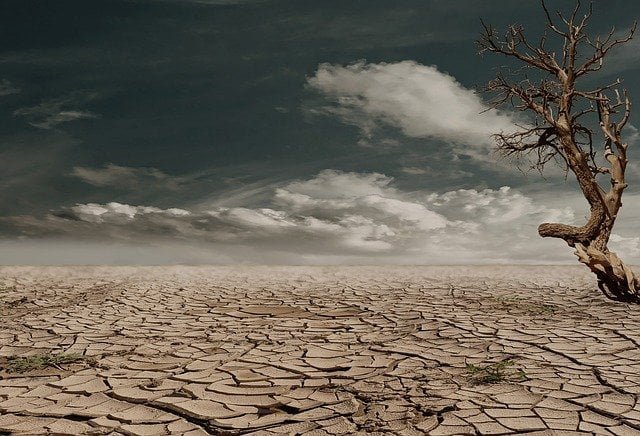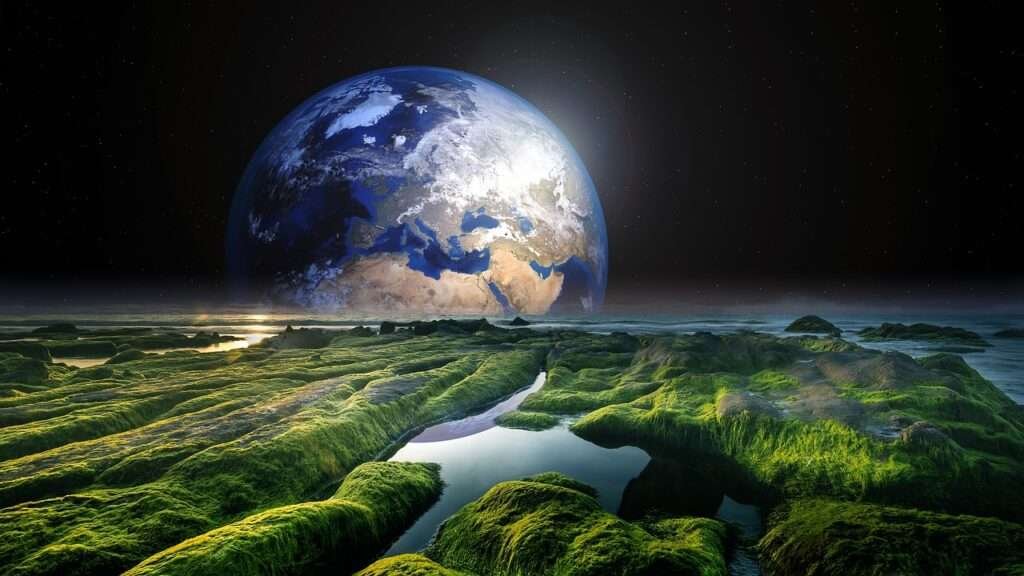
The problems with the biggest fishing nets
Today we take a closer Look at Super Trawlers, the
enormous nets they use, their Impact to our Oceans and what we might be able to
do about it.
In the vast expanse of our oceans, a silent battle
is being waged between man and nature. Super trawlers, massive fishing vessels,
equipped with the world’s largest fishing nets, are leaving a lasting impact on
our marine ecosystems. In this article, we will explore the companies behind
these colossal nets, the materials used in their construction, and the
consequences of their use. The nets used on the world’s largest super trawlers
are made of synthetic fibres such as nylon, polypropylene, or dyneema.
The materials used to make the biggest fishing
nets in the world are carefully chosen for their exceptional strength,
durability, and resistance to rot and abrasion. By utilizing a knotless netting
technique, the fibres are woven together without the use of knots. This unique
construction makes the netting stronger and less likely to catch on debris or
other obstructions, ensuring a smooth operation during fishing expeditions.
To accommodate the sheer size of these nets, they
are hoisted aboard the ship using huge spools capable of storing thousands of
feet of netting. Once on board, the nets are attached to the trawlers using
winches and ropes. These winches, hydraulically operated, possess the power to
lift and lower nets weighing thousands of pounds. The ropes used for releasing
and retrieving the nets are specifically designed to be tough and durable,
constructed with synthetic fibres.
The dry weight of these nets can vary based on their
size and the materials employed, but they can weigh several thousand pounds. It
is staggering to think that these nets have the capacity to catch thousands of
tonnes of fish and other marine creatures in a single haul. However, it is
precisely this scale of fishing that has raised concerns among many individuals
and environmental organizations. The use of these monstrous nets and the super
trawlers that employ them has had a devastating impact on our oceans. Not only
do these nets catch the targeted species, but their sheer size also captures
every other marine creature in their path.
Super Trawler nets leave behind a trail of
death and destruction.
The damage inflicted on the ocean floor is another
cause for concern. As these nets are dragged along the seabed, they
indiscriminately destroy delicate ecosystems, including coral reefs and other
vital habitats. Over the past century, the consequences of these practices have
been dire. Numerous marine species have been driven to extinction, forever lost
from our oceans.
The delicate balance of marine life has been
disrupted, leading to imbalances in the food chain and ecosystem as a whole.
The eradication of marine life is not only a loss in terms of biodiversity but
also threatens the livelihoods of millions of people who depend on the oceans
for sustenance and employment.
We need more responsible fishing and
protected marine areas.
The implications of a world without fish or other
marine life are grave. Our oceans provide us with more than just food; they
regulate our climate, produce oxygen, and support countless ecosystems. The
extinction of marine life would have a ripple effect on the entire planet,
disrupting the delicate balance of nature and leading to unforeseen
consequences. It is essential that we recognize the urgent need for sustainable
fishing practices and take steps to protect our oceans. Governments,
organizations, and individuals must work together to implement stricter
regulations on super trawlers and the use of these massive fishing nets.
By promoting responsible fishing methods and
supporting initiatives that promote marine conservation, we can ensure the
survival of our oceans and the diverse life they hold. In conclusion, the
world’s largest fishing nets used on super trawlers may be a testament to human
ingenuity and technological advancement, but their impact on our oceans cannot
be ignored. The eradication of marine life and the destruction of delicate
ecosystems are consequences that we cannot afford to overlook. It is our
collective responsibility to protect and preserve our oceans for future
generations, ensuring a sustainable and thriving planet for all.
According to a study that was put together by the
United Nations Food and Agriculture Organization, 90% of the world’s fisheries
are either overfished or at the limit of sustainability. This has led to the
extinction of several marine species and there are several marine species that
are currently on the threatened list. Some of these species include Australian
sea lions, dugongs, hammerhead sharks, snubfin dolphins, southern bluefin tuna,
and whales.
To reduce the need for enormous super trawlers and
the overfishing of our oceans, we can take several steps. One of the most
effective ways to reduce overfishing is to reduce demand for fish. If everyone
in the world stopped eating fish, it would certainly help to reduce the need
for these destructive vessels. We can also encourage sustainable fishing
practices such as using smaller boats, reducing by-catch, and avoiding overfished
areas. Additionally, we can support marine conservation efforts such as
creating marine protected areas, reducing pollution, and addressing climate
change.
Can
Filling Coal Mine Craters with Seawater Help Save Our Oceans?
When coal mining operations are completed, they
often leave behind large craters that can have a significant impact on the
environment. One intriguing idea that has been proposed is to fill these
craters with seawater. While this approach may seem unconventional, it has the
potential to not only address the environmental concerns associated with coal
mining but also help save our oceans. In this article, we will explore the
feasibility of filling coal mine craters with seawater and its potential
benefits.
One of the primary concerns with filling coal mine
craters with seawater is the potential contamination of groundwater. The high
salt content in seawater could potentially affect the water table and
surrounding groundwater. However, the extent of this impact would depend on
various factors such as the location of the mine, the depth of the crater, and
the geology of the surrounding area.
Despite the concerns, it is important to note that
natural filtration can occur when seawater is introduced into the ground. The
earth has the remarkable ability to filter out salt and other impurities,
allowing clean water to percolate down into the water table. The rate of
filtration, however, depends on factors such as the porosity of the soil, the
depth of the water table, and the amount of rainfall in the area 1.
While filling coal mine craters with seawater is
not a common practice, it is an idea worth exploring. If successfully
implemented, it could have several potential benefits:
If adopted, this process would create massive
inland saltwater lakes that can serve as habitats for marine life, potentially
breeding fish and other species that are struggling to survive due to overfishing
in the oceans 1. This approach can not only address the environmental concerns
associated with coal mining but also help save our oceans. However, it is
important to consider the potential risks and benefits of this approach before
implementing it on a large scale. By providing a controlled environment, we
could help replenish and protect these vulnerable species.
By creating inland saltwater lakes, we can help
restore the ecological balance and provide a sustainable habitat for marine
life. These lakes can also be used for recreational activities such as
swimming, boating, and fishing. The potential benefits of this approach are
many and varied.
Please note that the feasibility of this approach
depends on various factors such as the location of the mine, the depth of the
crater, and the geology of the surrounding area. It is important to conduct a
thorough analysis of these factors before implementing this approach.
Filling coal mine craters with seawater can create
massive inland saltwater lakes that can serve as habitats for marine life,
potentially breeding fish and other species that are struggling to survive due
to overfishing in the oceans. This approach can not only address the
environmental concerns associated with coal mining but also help save our
oceans. However, it is important to consider the potential risks and benefits
of this approach before implementing it on a large scale.
We would be able to create recreational
opportunities such as boating, fishing, and swimming, providing a new source of
enjoyment for local communities. This approach has been successfully
implemented in the Hazelwood open-cut mine in Victoria, Australia.
Moreover, filling the massive craters left behind
from completed mining options with seawater can assist with rehabilitating
area.
The presence of water could help stabilize the
area, prevent erosion, and encourage the growth of vegetation. This could
contribute to the restoration of the natural landscape and provide new
opportunities for biodiversity.
While there are concerns regarding the potential
impact of filling coal mine craters with seawater, it is an idea that merits
further exploration. The natural filtration process and the potential benefits,
such as the creation of inland saltwater lakes and environmental
rehabilitation, make it an intriguing possibility. However, careful
consideration of the location, geology, and other factors is essential to
mitigate any potential negative impacts 1. By thinking outside the box and
considering innovative solutions like this, we can not only address the
environmental challenges associated with coal mining but also take steps
towards preserving and restoring our precious oceans.
Dry areas with limited annual rainfall often face
challenges when it comes to water availability. However, a unique solution has
emerged that has the potential to improve the water cycle in these regions. By
filling in the craters left behind by mining activities with salt water, we can
create a sustainable water source that benefits both the environment and the
local communities.
This innovative approach will help address the
water scarcity issue at arid inland areas.
We’ve got plenty of salt water to spare, in fact 97%
of the water on Earth is salt water. This includes water from oceans, marginal
seas, saline groundwater, and water from saline closed lakes. The vast bulk of
the water on Earth is saline or salt water, with an average salinity of 35% but
this varies slightly according to the amount of runoff received from
surrounding land.
The remaining 2.5% of the water on Earth is
freshwater, with only 0.3% in liquid form on the surface. So rather than fill
up these old mining craters with fresh water like I’ve heard some people mention,
let’s use what we have an abundance of.
Salt water can be distributed to the dry regions by
filling in these mining craters.
This potential solution presents several benefits
such as:
Water
Conservation: By utilizing salt water, we can preserve
precious freshwater resources. This approach ensures that freshwater supplies
are not further depleted in regions already facing water scarcity.
Preventing
Soil Erosion: The filling of mining craters with salt
water helps stabilize the soil, preventing erosion and the loss of fertile
land. This promotes the growth of vegetation and supports the local ecosystem.
Enhancing
Biodiversity: The creation of water reservoirs in these
craters attracts various forms of wildlife, leading to an increase in
biodiversity. This helps restore the balance of the local ecosystem and
supports the survival of numerous species.
Potential for Agriculture: The availability of
water in these craters opens up opportunities for agricultural activities. With
proper irrigation systems, crops can be cultivated, providing food security and
economic opportunities for the local communities.
By filling mining craters with salt water, we can
create a sustainable water source that benefits both the environment and the
local communities. However, it is important to consider the potential risks and
benefits of this approach before implementing it on a large scale. The
feasibility of this approach depends on various factors such as the location of
the mine, the depth of the crater, and the geology of the surrounding area.
Other benefits of this process would be:
Increased Evaporation: The
exposed salt water in the craters increases the evaporation rate, contributing
to the formation of clouds and potential rainfall in the region. This helps
replenish the groundwater and surface water sources.
Condensation and Precipitation: The
increased moisture in the air due to the evaporation of salt water can lead to
condensation and precipitation. This process further supports the water cycle,
providing a sustainable source of water in these arid regions.
Reduced Heat Island Effect: The
presence of water in the craters helps regulate temperatures, reducing the heat
island effect commonly experienced in dry areas. This creates a more favourable
environment for both human and plant life.
Improved Water Quality: Over
time, the salt water in the craters can undergo natural filtration processes,
resulting in improved water quality. This can benefit both the environment and
the communities relying on these water sources.
It might just be a very promising solution to
our woes:
Filling mining craters with salt water offers a
promising solution to the water scarcity problems at our most arid areas. By
harnessing the potential of salt water, we can create sustainable water
sources, enhance the water cycle, and support the growth and development of
local communities. This innovative approach not only addresses the
environmental challenges posed by mining activities but also provides
opportunities for agricultural development and biodiversity conservation. It is
a step towards a more sustainable and water-secure future for these arid
regions.
A unique solution has emerged that has the
potential to improve the water cycle in these regions. By filling in the
craters left behind by mining activities with salt water, we can create a
sustainable water source that benefits both the environment and the local
communities.
By thinking outside the box and considering
innovative solutions like this, we can not only address the environmental
challenges associated with mining activities but also take steps towards
preserving and restoring our precious water resources and potentially save a
lot of fish species and marine life. The feasibility of this approach depends
on various factors such as the location of the mine, the depth of the crater,
and the geology of the surrounding areas.
How would we transport the water from the ocean
to the mine craters?
We would pump the water through dedicated
pipelines. The cost of constructing such
large pipelines could vary depending on several factors such as the length of
the pipeline, the materials used, and the terrain of the area. For instance,
the cost of constructing a typical 100 km pipeline in Australia can range from
$10 million to $100 million depending on the factors mentioned above.
Water flow can be increased by using pumping
stations. These stations are equipped with pumps, valves, in-station piping,
controls, standby/backup power, and various instrumentation. The pumps used in
these stations can be centrifugal pumps, submersible pumps, deep-well turbine
pumps, or propeller pumps depending on the application. Booster pump stations
would insure that the flow of sea water into the mining crater being filled up
would be constant. Higher pumping pressures
would be required for getting the sea water pump over hilly/mountain areas.
There will be several considerations as follow:
a)
Pipe Materials and Sizes: Pipes
used for getting the water from the ocean to the mining crater would probably
vary from 1 metre diameter concrete pipes in some areas to smaller diameter PVC,
PE and steel pipes in other areas.
b)
The size of these pipes needed
would naturally vary depending on the location and the amount of water that
needs to be transported and how fast we want the mining craters filled in.
c)
Cost of Constructing Large
Pipelines: The cost of constructing large pipelines can
vary depending on several factors such as the length of the pipeline, the
materials used, and the terrain of the area.
d)
For instance, the cost of
constructing a 100 km pipeline in Australia can range from $10 million to $100
million depending on the factors mentioned above.
e)
Pumping Stations and Equipment: Pumping
stations are equipped with pumps, valves, in-station piping, controls,
standby/backup power, and instrumentation.
The pumps used in these stations can be centrifugal pumps, submersible
pumps, deep-well turbine pumps, or propeller pumps depending on the
application. Booster pumps are also
used to increase pressure locally or temporarily. Booster pump stations are usually remotely
located from the main pump station, as in hilly topography where high-pressure
zones are required, or to handle peak flows in a distribution system that can
otherwise handle the normal flow requirements.
The benefits would include:
1.
Increased Evaporation: The
exposed salt water in the craters increases the evaporation rate, contributing
to the formation of clouds and potential rainfall in the region. This helps
replenish the groundwater and surface water sources.
2.
Condensation and Precipitation: The
increased moisture in the air due to the evaporation of salt water can lead to
condensation and precipitation. This process further supports the water cycle,
providing a sustainable source of water in these arid regions.
3.
Reduced Heat Island Effect: The
presence of water in the craters helps regulate temperatures, reducing the heat
island effect commonly experienced in dry areas. This creates a more favourable
environment for both human and plant life.
4.
Improved Water Quality: Over time, the salt water
in the craters can undergo natural filtration processes, resulting in improved
water quality. This can benefit both the environment and the communities
relying on these water sources.
Conclusion: Getting
rid of super trawlers would be ideal situation but that might take some doing.
In the interim, let’s look at being creative and
protecting fish and marine species by giving them another home and in doing so,
probably fix up some environmental issues at inland areas that getting little
annual rainfall.
The concept of filling mining craters with salt
water offers a promising solution to the water scarcity problem in dry areas
with limited annual rainfall. By harnessing the potential of salt water, we can
create sustainable water sources, enhance the water cycle, and support the
growth and development of local communities.
This innovative approach not only addresses the
environmental challenges posed by mining activities but also provides
opportunities for agricultural development and biodiversity conservation. It is
a step towards a more sustainable and water-secure future for these arid
regions.











